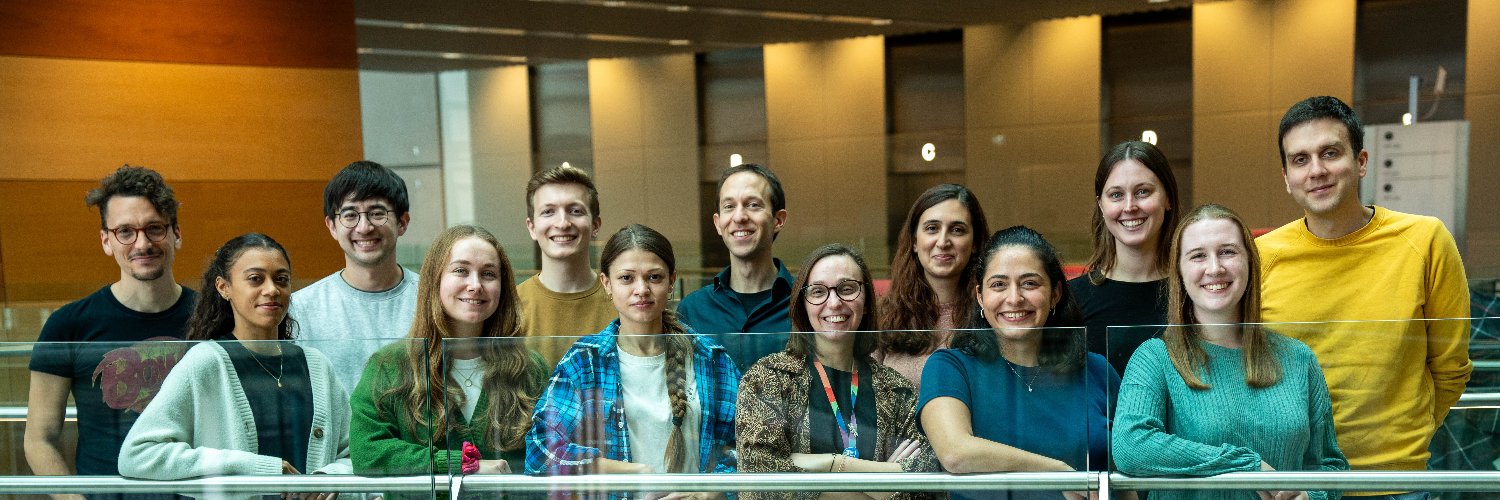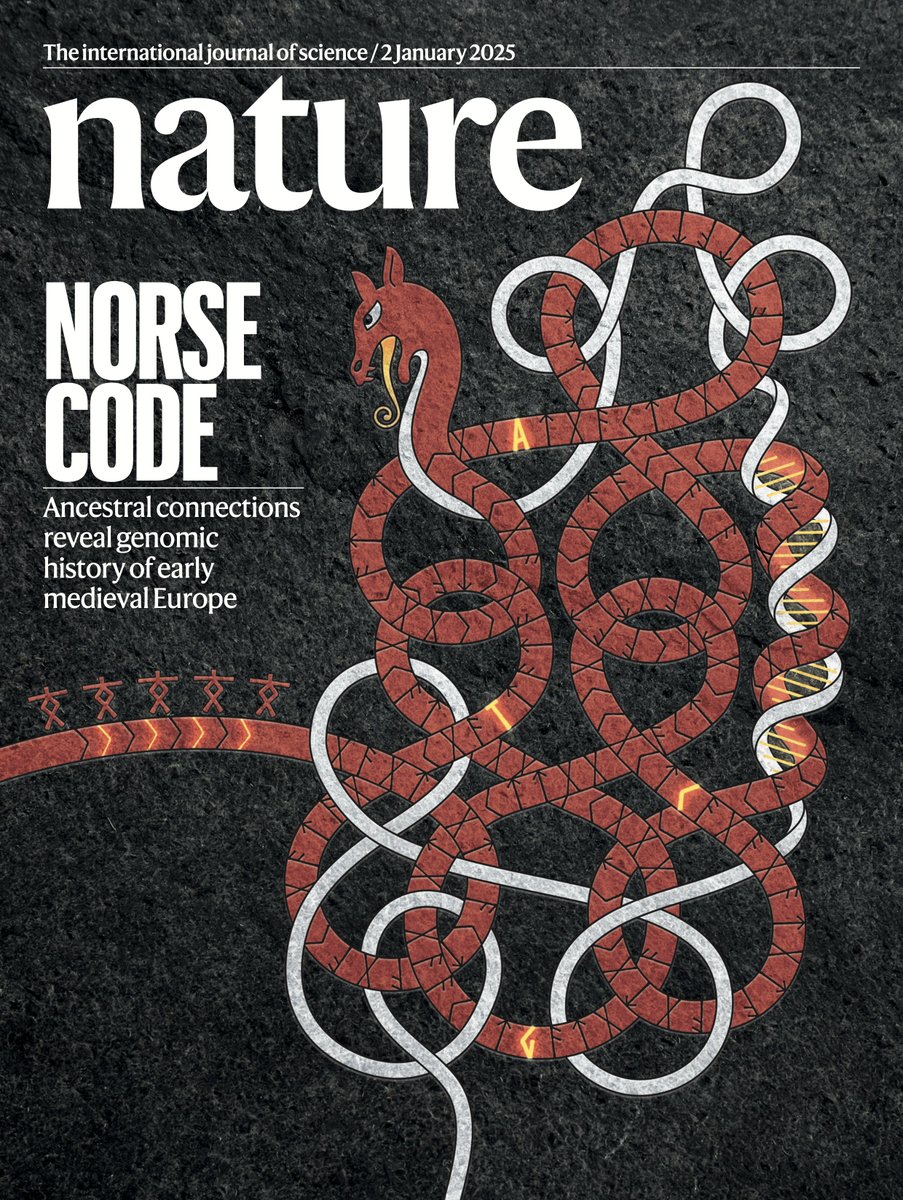
Pontus Skoglund
@pontus_skoglund
Evolutionary geneticist. My ancient genomics group at the Francis Crick Institute studies the human past using ancient DNA and proteins.
Kicking off the new year, our paper by @leo_speidel et al. is out describing what to me is a breakthrough in ancient genomics. By using genealogies to study ancestry we can get much more resolution to study finer-scale history. We call this method Twigstats.

1 AD – 500AD: We see clear evidence of northern European/Scandinavian-related ‘pink’ ancestry appearing across Europe. These match historical accounts of Germanic expansions and arrive early in places, e.g. a first/second century AD individual in Slovakia.
Join us in London 14th November 2025 for talks on ancient genomes, human biology and medicine! Invited talks by Svante Pääbo, Priya Moorjani, Lluis Quintana-Murci, and Iain Mathieson, and several more from submitted abstracts (abstract deadline 30 June).
Registration now open! Join us for our Autumn Meeting: “Ancient genomes: perspectives on human biology and medicine”. Explore how ancient DNA informs migration, adaptation & disease. genetics.org.uk/events/ancient…
Registration now open! Join us for our Autumn Meeting: “Ancient genomes: perspectives on human biology and medicine”. Explore how ancient DNA informs migration, adaptation & disease. genetics.org.uk/events/ancient…
Check out our Ancient Genomics Lab, including @pontus_skoglund, @boothicus and @tait_frankie, on tonight’s new episode of Digging for Britain. 🦴 Watch it now on iPlayer (from 46:00), or tune in to @BBCTwo at 20:00. bbc.co.uk/iplayer/episod…
The paper: science.org/doi/10.1126/sc… Photo caption: Scythian burial in Skorobir necropolis in Bilsk hillfort Photo credit: Iryna Shramko
The study was made possible by the resilience of Ukrainian researchers – second author Olga Utevska from V. N. Karazin Kharkiv National University and MSCA4Ukraine fellow at @genomicstartu, and numerous archaeologists conducting excavations in Ukraine despite the war.
Proud to have contributed to this study exploring 🇺🇦Ukraine's deep history through ancient DNA from 91 individuals. Thanks and congratulations to @LehtiSaag, Olga Utevska, @mt_genes and all other co-authors in Ukraine and beyond.
Very happy to share the results of my @MSCActions project done at @UGI_at_UCL with @mt_genes and @pontus_skoglund from @TheCrick. We used ancient DNA to reveal remarkably high genetic diversity in the region of modern-day @Ukraine over the last 3,500 years until ~500 years ago.
Very happy to share the results of my @MSCActions project done at @UGI_at_UCL with @mt_genes and @pontus_skoglund from @TheCrick. We used ancient DNA to reveal remarkably high genetic diversity in the region of modern-day @Ukraine over the last 3,500 years until ~500 years ago.
In the current climate of vaccine hesitancy, it is important to realise how much public health investments have done to childhood survival rate. Read this historic review to understand that we really should not take health for granted theconversation.com/infectious-dis…
Also don't miss Leo's thread on our paper, and the Crick's excellent illustrated lay summary by @claregreen45194 crick.ac.uk/news-and-repor…
Happy New Year! Our Twigstats paper is now out! nature.com/articles/s4158…
Researchers from the Crick, @UCL and @KingsCollegeLon used a new way of analysing ancient DNA to better understand European migrations in the years 1-1,000 AD The findings were led by @leo_speidel with senior author @pontus_skoglund crick.ac.uk/news-and-repor…
Finally, most recently, I migrated from London to Tokyo @riken_en. I had a great time in London at @TheCrick and @ucl and hope to be back frequently.
And quite unbelievably, it also made the cover. Entirely thanks to a very special cover design by @oliveruberti. The cover is inspired by Scandinavian runestones, sometimes mentioning voyages taken by ancestors to foreign lands.
This was a big team effort, and huge thanks to @pontus_skoglund, @marinasdsilva, @Boothicus, @_kakia_ , @AndersGother, Chris Barrington, Ben Raffield, and Peter Heather for making this paper happen!
Additionally, we also see impact from other parts of Europe, notably eastern groups, in parts of Scandinavia, consistent with previous aDNA studies.
With increased power, we fit every Viking Age individual. Southern Scandianvia shows influx from the ‘yellow’ central European ancestries. We think that this northwards expansion started likely before 800AD, transforming ancestry in pre-Viking Age Scandinavia and beyond.
500AD – 1000AD: We then shift our focus to Scandinavia itself, where a huge diversification in ancestry is seen by the Viking Age, compared to the preceding early Iron Age. This was observed previously, but how did this dramatic diversification happen?
We then applied Twigstats to >1500 imputed ancient genomes focusing on the early medieval period from 1AD – 1000AD in Europe. We’re revisiting this period encompassing the Iron Age, the fall of the Roman Empire, the ‘Migration Period’ and the Viking Age. We see three major events
Twigstats can also time-stratify events. Deep events may act as confounders to more recent events. E.g. for Neanderthal admixture, there are alternative histories with deep structure and no admixture resulting in similar f-stats values. Twigstats can distinguish these scenarios.
We can replicate the fascinating fine-scale patterns of genetic structure in Neolithic Ireland, revealing close ties between the elite, reported by @_larsporsena et al (nature.com/articles/s4158…). This is not captured by regular outgroup f3 statistics.